London Bridge station is one of the oldest in the world. It started life in the 1830s as a terminus, built on cleared land on the south bank of the Thames. Land was cheaper there, and it was easier to evict the non-voting poor than the wealthier residents north of the river.
For some time, the site featured a jumble of stations all belonging to different companies. The London and Greenwich Railway built its first station in 1836. Then the London and Croydon Railway built its own station next to it in 1839, when the London and Greenwich sold it enough land to pay for its own viaduct.
The architect Lewis Cubitt (of King’s Cross fame) then designed a new joint station, which opened in 1844. Eventually the London, Brighton and South Coast Railway (LBSCR) and South Eastern Railway (SER) managed to combine the buildings into two large joint stations. The LBSCR had the terminus, while the SER station served the through lines to the west.
In the 19th century, London Bridge was renowned for being a confused and confusing mess. Platforms weren’t numbered sequentially in the two stations, and it wasn’t always obvious how passengers were supposed to find their way around the vast complex of arches, tunnels and offices.
The Southern Railway took control in 1923, and started introducing colour light signals, new signalling equipment, and third rail electrification in the 1930s. The SR also upgraded the shabby Victorian station and concourse to the best of its ability, although the heavy restrictions on space made it difficult to make any real impact.
It was still an under-capacity, chaotic place in the 1940s. It was heavily damaged in 1943 during the blitz, and was repaired as best the Southern Railway could manage.
Most of the termini in London have been in a state of constant upgrading and reinvestment since they were built, and London Bridge is no exception. In the 1970s, British Rail decided that it was time for another upgrade at the station, to cope with increasing passenger numbers against a backdrop of insufficient capacity and pathing issues.
And so in 1972 a major resignalling and upgrading programme began. The Victorian trainshed was retained over the through lines, but a new set of awnings was built across the SER tracks, and the station received a new concourse.
The work was finished in 1978 and cost approximately £21 million, and was widely praised by architects and civil engineers at the time as one of the best station rebuilds of the 20th century.
It proved sufficient for the station to cope with the traffic demands of the day, but eventually it was always going to need further serious upgrading. The trackwork at London Bridge is predictably dense, and has caused bottlenecking issues ever since the first decades of its existence.
This will soon be upgraded and flows improved, although the problems of operating a major, busy station in such cramped conditions may well reappear even after rebuilding work is completed. It’s a problem at many other stations in similar situations, notably the eastern station throat at Manchester Piccadilly.
Visit London Bridge in the 1980s, and you were likely to see an abundance of Class 415 and ‘419’ electric multiple units trundling along. The ‘space age’ footbridge, built as part of the 1970s upgrades, would also have been there - in all its brown, incongruous splendour. The bridge is now being demolished as part of the new upgrades.
Following the Southern’s electrification of London Bridge, EMUs became a common sight on suburban and coastal services. In fact, the third rail EMUs are still there, although they’ve come a very long way since the slam-door Mk 1 bodies of the 1960s, 70s and 80s.
London Bridge is still used for commuter services and suburban trains around London and the South East, and is busier now than at any time in its history.
Today’s units are Govia Thameslink Railway services to the South Coast, whizzing through in the form of Classes 317 and 319. GTR Class 377 Electrostars and Class 456s are also frequent visitors en route to the likes of Brighton, Caterham, Tadworth.
Southeastern trains travel through to Cannon Street and Charing Cross, and in the other direction serve Hastings, Dartford and Hayes. These take the form of Class 367, ‘465’ and ‘466’ EMUs.
Controversially, Southeastern uses Driver Only Operation (DOO) on its routes out of London Bridge. Many of its services are listed as DOO, although they remain the exception (rather than the rule) at London Bridge.
Soon we will also be able to see new Desiro City Class 700 EMUs at London Bridge, on Thameslink services.
Today’s plans for the station also include complete renewal of the interior, incorporating some of the Victorian arches and passageways into a newly designed concourse. The viaduct leading to the station itself is being cleaned, renovated and partly rebuilt, to allow for new track and layouts at the throat that will make it a more efficient through station with fewer terminal platforms.
This all gives the impression of a station in continuous development. There’s plenty still being done to improve London’s veteran through/terminus, and it’s all being done while the trains still rumble through and passengers still crowd the concourses.
It’s a time of transition at London Bridge. The station is in the middle of rebuilding as part of the £6 billion Thameslink project, with the number of through platforms increased and the number of terminating platforms decreased, as well as the gradual decommissioning of the old signal box.
By August 2016, there will effectively be a brand new station, with a concourse the size of the football pitch at Wembley Stadium.
This will provide enormous benefits in terms of cross-London rail capacity (according to Office of Rail and Road station usage statistics, in 2013-14 the number of people using London Bridge totalled more than 56 million), but it is not without its frustrations, not least for regular passengers and staff. Right now, there are pressing operational issues.
“At 0830 a train can be two-three minutes late, and it is impossible to recover the service,” says Local Operations Manager Roy Lamb.
Things have been made slightly easier with the introduction of the Tanners Hill fly-under, which has allowed parallel moves. “New track has made a difference,” says Lamb.
On the day of RAIL’s visit, Platforms 1-3 and 6-9 were all in use while the remainder were being rebuilt, with gaping voids in the spaces where trains once stood. They will return to service gradually as the Thameslink programme is completed, but the entire complement of platforms will not be reinstated until 2018.
Signallers have a challenge to weave in Southeastern, Southern and Thameslink trains, although the new Bermondsey ‘dive under’ (RAIL 725) will help to alleviate this. They are also trying not to divert to Cannon Street or Charing Cross at times of disruption, to avoid an impact on those stations “as it affects individual performance”, says Network Rail Area Manager for Kent David Davidson.
When London Bridge signal box is decommissioned, it will become merely a relay room for signalling - the panels will no longer be needed as control will be taken over by Three Bridges Route Operating Centre. The relay room at trackbed level is like something that might have first been revealed on a 1970s edition of Tomorrow’s World. Lamb reckons there are “approximately 600” relays in this room, clattering and clicking away (or at least that’s the figure he was told when he first started working at London Bridge around 15 years ago).
Since then, some relays have been replaced by Solid State Interlocking technology, which Lamb describes as “exceedingly reliable”.
Over at Southwark Bridge Road, where Network Rail and Southeastern share a control room (the building also accommodates other train operators), remote condition monitoring technology is in use in order “to get to infrastructure assets before they fail”, according to the staff member responsible.
Points, point heaters, relay room temperatures and level crossings can all be monitored, among other elements of the operational railway. The aim is to identify data and to analyse fault conditions within that data. Even the temperature of the rail itself can be measured.
In charge is Network Rail Route Control Manager Tom Giddings, who has shift responsibility for Southeastern staff.
“The peak’s shaping up well so far,” he tells RAIL. (At 0847 on June 25, the Kent route is recording a Public Performance Measure of 98%.)
“The Charing Cross run through has improved performance,” he adds, pointing to a colour-coded screen. “Yellow indicates a train that is under ten minutes late. Red is over ten minutes”. (Fortunately, there are few red blobs.) Giddings tells RAIL that the biggest impact on service delivery is trespassers.
Train running controller Nicola Price works with both passenger operators and freight operating companies.
“If anything goes wrong I pick up the pieces,” she tells RAIL. Price will deal with unusual moves, and with control rooms across the country. It’s her job to know what moves are available - and it’s not easy to path one-off trains through one of the busiest rail networks in the world.
Incident Controller Bob Goodwin deals with train defects, trespass, level crossing incidents, or even incidents such as when a disabled person is using a level crossing while the barriers are coming down - incidents that necessitate a speedy response.
“An incident is anything that stops trains running to schedule. Or a risk to the public or the railway,” he explains.
Fencing issues that affect the integrity of the railway boundary also need to be dealt with, as well as the more unusual (and grisly). This morning, a dead badger has been found trapped in between the conductor rail and the running rail, and it must be removed.
It is Goodwin’s job to dispatch staff to deal with such incidents. He receives information from signallers, station staff and other members of the railway fraternity to enable him to do his job.
Over at the Cotton Centre, RAIL meets London Bridge Station Manager Denis Kirk and Route Station Manager Jasmine Sen, who in turn reports to the Network Rail Commercial Manager (essentially, it’s Sen’s role to deal with the politics, relationship-building and stakeholder management).
In the past few years, a lot of project work has been going on. The Shard, which overlooks London Bridge, was finished in 2012, while survey work for Thameslink started as far back as 2010.
“It’s more building site than station,” says Kirk, who remarks on how fundamentally similar the station layout is to that of the 19th century.
In January 2015 the rebuilding project entered Stage 2, after a 20-day blockade over Christmas. But congestion problems were growing.
“After it became obvious that the new layout wasn’t working so well, new Customer Information Screens came in, as there was crowding by one of the gatelines,” says Kirk.
Soon Platform 5 was lost to construction work, adding to the pressure. A communications plan to deal with the impact had been prepared, but at this point only three through platforms were available.
“The weather was against us as well - fine drizzle,” recalls Kirk. Passengers naturally don’t like standing in the exposed, cold weather, and so canopies now stretch the whole length of the platforms.
“Mark Carne and his team came to visit, and the executive team had issues highlighted to them,” adds Sen.
By this time the congestion issues at London Bridge had become the focus of the London and national media, and cracks were beginning to show under the strain.
“Staff were having panic attacks and needing to walk away,” recalls Sen. “You could see it in their eyes that they were nervous.”
There aren’t many Network Rail-managed staff on site, but there are lots of contractors (two agency teams make up the London Bridge team). Train operators fund NR to manage the safety perspective.
On March 3, an infamous photograph was taken showing a man ducking under the London Bridge gateline to escape the supposed crush conditions. As it turned out, there was no ‘crush’ - a sidegate had been opened, although this had little effect on the impatience (perhaps understandably) of some passengers. It was not, by all accounts, a good day. Issues on the London Overground at Canada Water had created a perfect storm, and people headed to London Bridge.
“At 1700 we started overcrowding straightaway,” says Kirk. “The same queuing system as had been used at the Olympics was put into operation. A lady started threatening a Customer Service Assistant. And mob rule smashed down barriers. People are used to the Underground shutting. But the London Bridge team needed to start closing doors.”
The Customer Service Assistants were later to be credited with preventing accidents. Says Kirk: “There were no accidents on March 3 despite the chaos. And there hasn’t been a single deathly crush or safety incident.
“It’s not been overly pleasant. But with London Bridge, people lose focus of the tremendous project that’s going on.”
Nor can the station just be closed: “Where would you send the passengers? We have half a station and we are trying to still run. We are trying to get more people through with half the capacity.”
In conjunction with the construction teams, more has been done to alleviate the pressure.
“Everybody is trying to leave off Platforms 1 and 2, so we worked with the project to get the buildings on those platforms taken away,” says Kirk.
The situation is still not perfect, but the team feels that progress has been made. For example, on one day towards the end of June, points failed outside London Bridge. Crowd control was implemented, with a one-way system adopted.
“We have a very good team. We have a very engaged team. There is now no long-term sickness,” enthuses Sen, remarking on how people have “pulled together in a crisis”. She pays tribute to her colleague: “People have a tremendous respect for Denis.”
Kirk, for his part, highlights the “very strong” relationship with the TOC represenatives at London Bridge, such as Southeastern Station Manager Gavin Smith and Southern Station Manager Simon Todd.
“There is no blame culture throughout all of this,” says Kirk, who adds that meetings held with Rail Minister Claire Perry have only served to demonstrate the political importance of ‘getting London Bridge right’.
Nevertheless, the impact of the reduced-size station is ongoing.
“If the smallest thing happens we spend a lot of time dealing with questions,” says Kirk, who is focused on making information better for passengers in the future.
“If you look at really excellent customer service organisations, there needs to be a culture change.”
All in all, there’s a lot going on at London Bridge - plenty of upgrades, as well as information improvements and new working practices for the staff.
If anything goes wrong, if anything is delayed, the centrality, importance and capacity of London Bridge means that the staff in charge have to bear the brunt of the inevitable flak on the front line.
New flows for passengers and the demolition of internal buildings always cause disruption. But in a station such as London Bridge, that disruption could be construed as just the latest stage in a 160-year renovation project that is still not finished. And it is unlikely to be the last chapter in this old place’s history.
A recent ORR report criticised Network Rail for its handling of the Thameslink project and the issues at London Bridge (RAIL 781). But away from the political friction higher up, the frontline staff are still working as hard as ever in the building site station.
The station today has its Victorian trainshed and viaduct arches that carry on into the distance, as well as some 1970s buildings around the platforms and concourse. Soon it will have even more capacity, new platforms, and new facilities and structures.
The entrance, however, for now, remains a dark and well-hidden maze, just about the same complaint you could have made of the place a century ago. The efforts of Network Rail’s army of workers will surely change this soon enough… and not before time.
- This feature was published in RAIL 782 (September 2 - 15 2015)

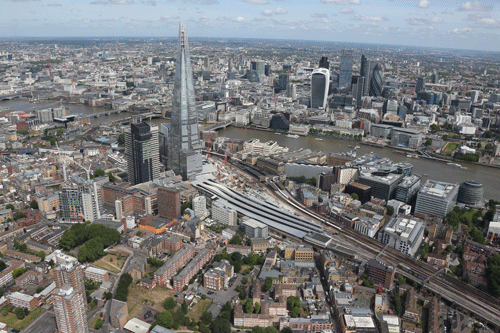
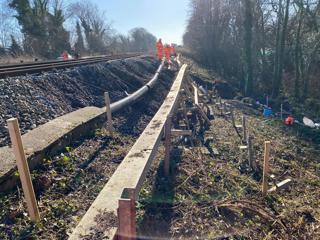
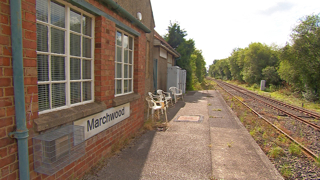
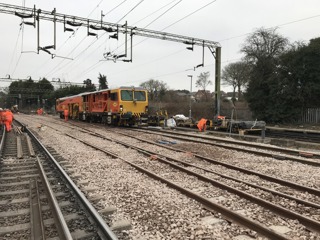
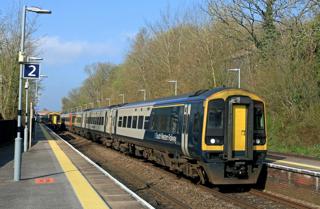
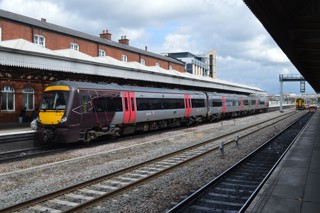











Login to comment
Comments
No comments have been made yet.